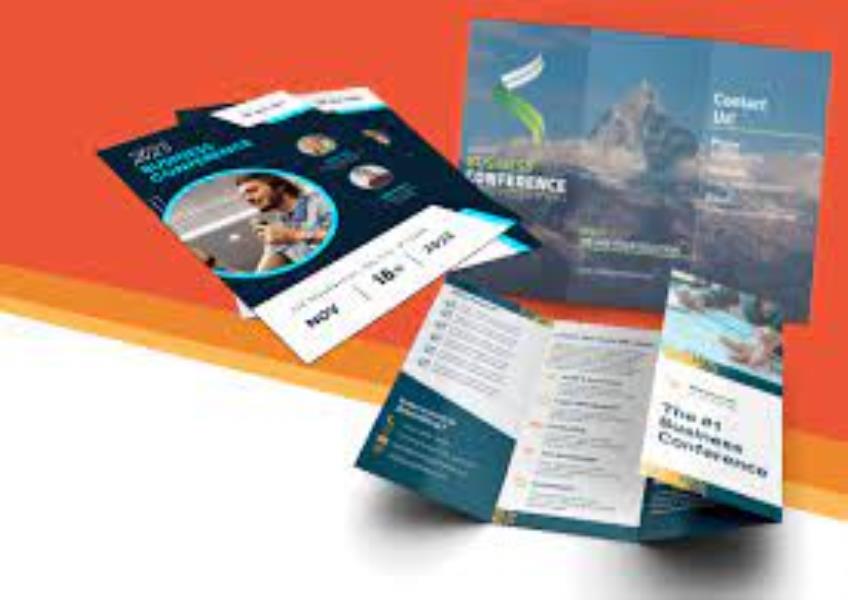Get the latest updates From BL Soni College Bhilwara

How can graphic design be used to create visually appealing brochures for events?
Graphic design plays a crucial role in creating visually appealing brochures for events. A well-designed brochure can attract attention, convey information effectively, and encourage attendees to engage with the event. Here are steps and tips for using graphic design to create appealing event brochures: 1. Define Your Goals: Determine the main objectives of your event brochure. Are you promoting an upcoming conference, festival, trade show, or educational event? Knowing your goals will guide your design choices. 2. Understand Your Audience: Identify your target audience for the event and tailor the design to their preferences, interests, and needs. Consider factors such as age, profession, and location. 3. Choose a Design Style: Select a design style that aligns with the event's theme and audience. Whether it's modern, classic, playful, or corporate, ensure consistency in the design elements. 4. Visual Branding: Incorporate the event's branding elements, including logos, color schemes, and typography, to create a cohesive and recognizable design. 5. Clear Hierarchy: Establish a visual hierarchy that guides readers through the brochure. Use size, color, and typography to emphasize key information, such as event dates and highlights. 6. Captivating Cover: Create an eye-catching cover that instantly grabs attention. Use compelling visuals, a bold headline, and a brief teaser to entice readers to open the brochure. 7. Engaging Imagery: Use high-quality, relevant images that showcase the event's key attractions and convey its atmosphere. Images should resonate with the target audience. 8. Concise Content: Write concise and informative content. Highlight essential details such as event dates, location, schedule, speakers, and registration information. Use bullet points and short paragraphs for readability. 9. Grid Layout: Organize content using a grid layout for a clean and organized appearance. Grids help maintain consistency and balance in your design. 10. Typography Choices: - Select legible fonts for body text and headings. Ensure that font choices match the event's style and theme. Use font sizes and weights to create hierarchy. 11. Color Scheme: - Use a consistent color scheme that complements the event's branding. Consider color psychology and the emotions associated with the chosen colors. 12. Event Schedule: - Present the event schedule in an easy-to-read format. Use tables or timelines to clearly display session times, topics, and locations. 13. Maps and Directions: - Include maps and directions to the event venue or key locations. Make it as convenient as possible for attendees to find their way. 14. Call to Action: - Encourage reader engagement with clear calls to action (CTAs). Use action-oriented language such as "Register Now" or "Learn More" with accompanying contact information or website links. 15. Testimonials and Social Proof: - If applicable, include quotes or testimonials from previous attendees or speakers to build credibility and excitement. 16. Interactive Elements (Digital Brochures): - If your brochure will be distributed digitally, consider adding interactive elements like clickable links, videos, and image galleries for a more engaging experience. 17. Proofreading and Editing: - Carefully proofread all content to ensure accuracy and clarity. Correct any typos or errors before finalizing the design. 18. Print and Digital Versions: - Create versions of the brochure optimized for both print and digital distribution. Ensure that the design elements work well in both formats. 19. Printing and Finishing: - If printing physical brochures, work with a professional printer to select the right paper quality, printing technique (e.g., matte, glossy), and finishes (e.g., embossing, foil stamping) to enhance the brochure's visual appeal. 20. Distribution and Promotion: - Develop a strategy for distributing the brochures to the target audience. Consider mailing, event booths, email campaigns, or website downloads. Promote the brochure on social media and other relevant channels. Creating visually appealing brochures for events requires a combination of design skills, understanding of the event's objectives, and consideration of the target audience. A well-designed brochure can serve as a powerful marketing tool to attract attendees and provide them with valuable information about the event.


